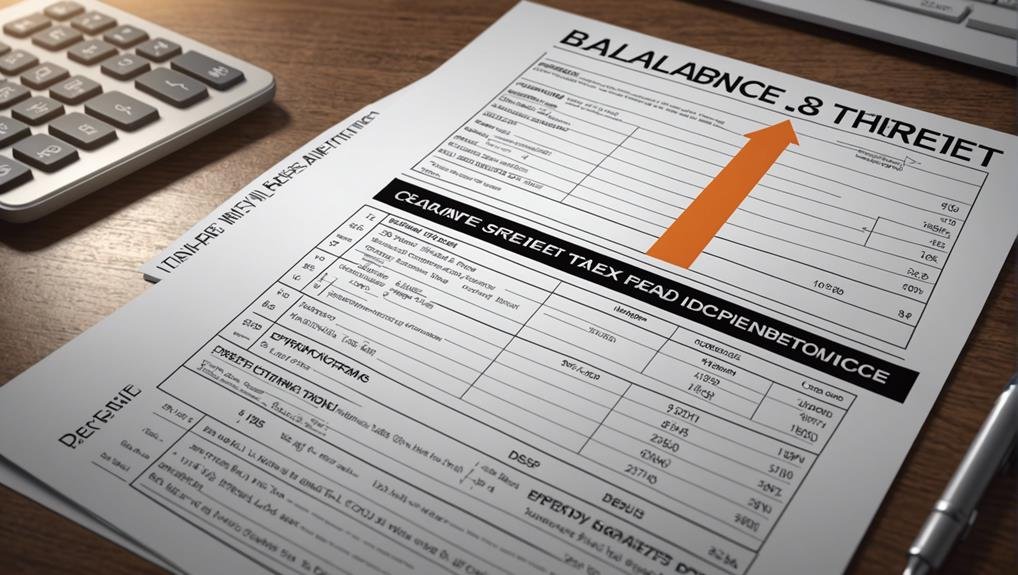Deferred Tax Liability Definition: How It Works With Examples
Exploring Tax Liability refers to future tax obligations a company anticipates. It is crucial for tax planning, ensuring compliance, and managing liabilities effectively. Calculating it involves expected tax rates and differences in taxable income, impacting financial statements. Examples demonstrate its practicality in financial reporting, such as the impact of depreciation methods. Understanding this concept helps optimize financial planning and cash flow. Deferred Tax Liability has significant implications on company earnings and financial well-being. To investigate further into how it works with examples and its management considerations, explore how it affects financial statements, reserves money for future tax expenses, and requires proactive tax planning.
Key Takeaways
- Represents future tax obligations based on anticipated tax rates.
- Involves taxable income differences and tax planning strategies.
- Demonstrates impact of depreciation methods on financial reporting.
- Affects financial statements, cash flow, and company's financial health.
- Requires compliance with accounting rules, proactive tax planning, and accurate balance sheet representation.
Definition of Deferred Tax Liability
A deferred tax liability, in the domain of financial accounting, denotes the recognized amount of taxes a company or individual will be obligated to pay in the future due to temporary differences between taxable income and financial statement earnings. It is important for tax planning strategies and tax liability management.
Companies can utilize deferred tax liabilities to manage their future tax obligations effectively. Understanding and appropriately handling these liabilities can lead to tax savings and improved financial performance. By aligning with accounting rules and government regulations, businesses can guarantee compliance and avoid potential issues.
Careful consideration of deferred tax liabilities can impact company earnings, cash flow, and overall financial health, making them a key aspect of financial planning and management.
Calculation of Deferred Tax Liability
The calculation of deferred tax liability involves determining the anticipated tax rate multiplied by the difference in taxable income. This calculation is important for businesses to understand their future tax obligations accurately.
When calculating deferred tax liability, several key considerations come into play:
- Tax Planning Strategies: Companies need to take into account tax planning strategies to minimize their tax liabilities effectively.
- Financial Statement Implications: Calculating deferred tax liability impacts a company's financial statements, influencing how investors perceive its financial health.
- Accuracy of Anticipated Tax Rate: Ensuring the anticipated tax rate used in the calculation is precise is crucial for accurate financial planning.
- Consideration of Future Tax Law Changes: Future changes in tax laws can impact the calculation, highlighting the need for flexibility in tax planning strategies.
Examples Illustrating Deferred Tax Liability
Illustrative scenarios can shed light on the practical application and implications of deferred tax liabilities in financial reporting.
One real-world application of deferred tax liability arises from differences in depreciation methods between accounting standards and tax laws. This creates a temporary dissonance between accounting earnings and taxable income, gradually diminishing as depreciation methods align.
For instance, companies may need to offset accounting entries to eliminate the liability over time. Such scenarios highlight the practical implications of managing deferred tax liabilities to ensure alignment with both accounting rules and government regulations.
Understanding these examples is important for businesses to accurately reflect their future tax obligations and optimize financial planning to mitigate any adverse impacts on cash flow.
Significance and Impact of Deferred Tax Liability
Signifying an essential aspect of financial reporting, the deferred tax liability holds substantial implications for a company's balance sheet and future tax obligations.
- Financial implications: It records taxes that are incurred but not yet paid, impacting the company's financial statements and cash flow.
- Future planning: The money reserved for future tax expenses reduces available cash flow for immediate spending and should not be used for other purposes to avoid potential financial trouble.
- Balancing act: It requires a delicate balance between adhering to accounting rules and planning for future tax obligations.
- Tax rate variability: Fluctuations in tax rates can directly impact the amount set aside for future tax payments, affecting the company's expenses and financial health.
Considerations for Managing Deferred Tax Liability
Proper management of deferred tax liability necessitates meticulous alignment with accounting regulations and proactive planning for future tax obligations. Tax planning plays a significant role in managing deferred tax liabilities as it involves strategizing to minimize tax burdens effectively.
Additionally, careful consideration in financial reporting is essential to guarantee accurate representation of these liabilities on the balance sheet. Companies must stay informed about changes in tax laws and regulations to adjust their strategies accordingly.
Conclusion
To sum up, grasping deferred tax liability is crucial for effective financial management. By calculating and overseeing this liability, businesses and individuals can predict and prepare for future tax obligations.
Just as a compass guides a traveler through unknown territories, deferred tax liability calculations serve as a navigational tool in the complex landscape of financial planning.
By recognizing its significance and impact, entities can guarantee financial stability and compliance with tax regulations.







